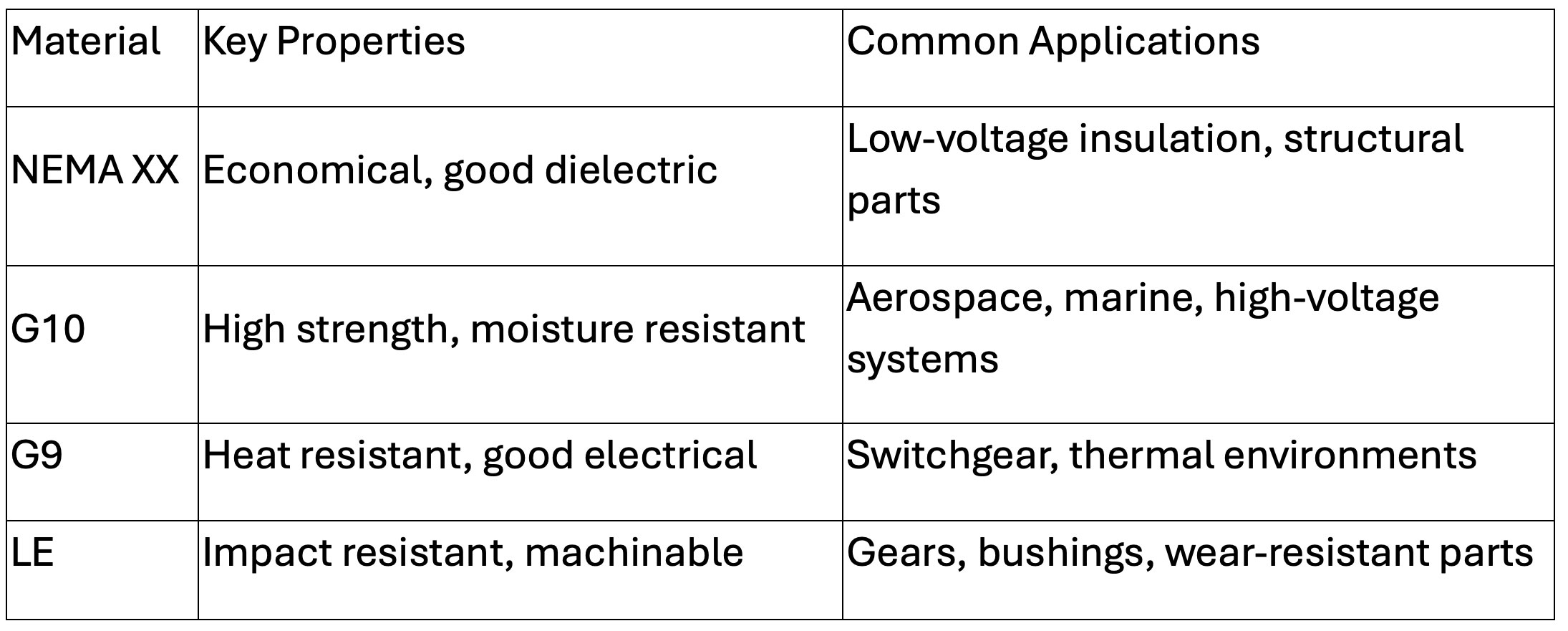When & Why Compression Molded Profiles Are Superior To Machined Sheet Material: Laminated & Molded Composite Profiles Explained

Composite profiles—square tubes, rectangular tubes, angles, and channels—are essential in modern electrical and mechanical systems. While these shapes can be produced by machining laminated sheets, molded profiles offer superior mechanical integrity and long-term reliability. Let’s dive into the science behind this difference and explore common materials and applications.

Why Molded Profiles Outperform Machined Profiles
The key lies in lamination direction and fiber orientation:
- Machined Profiles from Sheet Stock:
Laminated sheets are constructed with fibers oriented in-plane. When you cut a square tube or angle from a flat sheet, the load-bearing direction is compromised. Stress applied perpendicular to the laminations can cause delamination or shear failure, especially under impact or cyclic loading.
- Molded Profiles:
Molded components are manufactured with fibers and resin oriented to follow the geometry of the part. This results in:
- Continuous fiber reinforcement along load paths
- Uniform resin distribution for consistent strength
- No exposed laminate edges, reducing moisture ingress and mechanical weakness
The result? Higher tensile and compressive strength, superior impact resistance, and better dimensional stability under thermal cycling. Molded profiles are engineered for structural integrity, not just convenience.

Diagram 1: Machined Profile from Sheet Stock
- Laminations run parallel to the sheet surface. When cut into a tube or angle, exposed edges create weak points.
Diagram 2: Molded Profile
- Fibers follow the contour of the profile, providing continuous reinforcement and eliminating exposed laminate edges.
Understanding the Materials
Composite profiles are typically manufactured using thermosetting NEMA-grade materials, each tailored for specific performance requirements:
- NEMA Grade XX (Paper Phenolic)
Applications: Electrical insulation in low-voltage systems, structural components in cost-sensitive designs.
Properties: Good dielectric strength, moderate mechanical strength, economical choice for non-critical load-bearing parts.
- G10 (Glass Epoxy)
Applications: Aerospace brackets, marine structures, high-voltage insulation, and precision mechanical supports.
Properties: Exceptional mechanical strength, high dielectric properties, excellent moisture resistance.
- G9 (Glass Melamine)
Applications: High-temperature electrical insulation, switchgear components, and environments requiring thermal stability.
Properties: Superior arc resistance compared to G10, good electrical performance under thermal stress.
- LE (Linen Phenolic)
Applications: Electrical insulation in low-voltage systems, Wear-resistant gears, bushings, and mechanical components requiring machinability and impact resistance.
Properties: Good impact strength, better machinability than paper phenolic, suitable for dynamic mechanical parts.
Common Applications by Profile Type
- Square & Rectangular Tubes:
Structural frames in electrical enclosures, aerospace brackets, lightweight mechanical supports in corrosive environments.
- Angles & Channels:
Cable trays, switchgear supports, and reinforcement structures in industrial and marine applications.
Summary Table: Material vs. Application

Key Takeaway: Molded composite profiles are not just a manufacturing preference—they are a mechanical necessity when strength, reliability, and longevity matter. For engineers designing critical systems, understanding the interplay between material properties and manufacturing methods ensures optimal performance.



